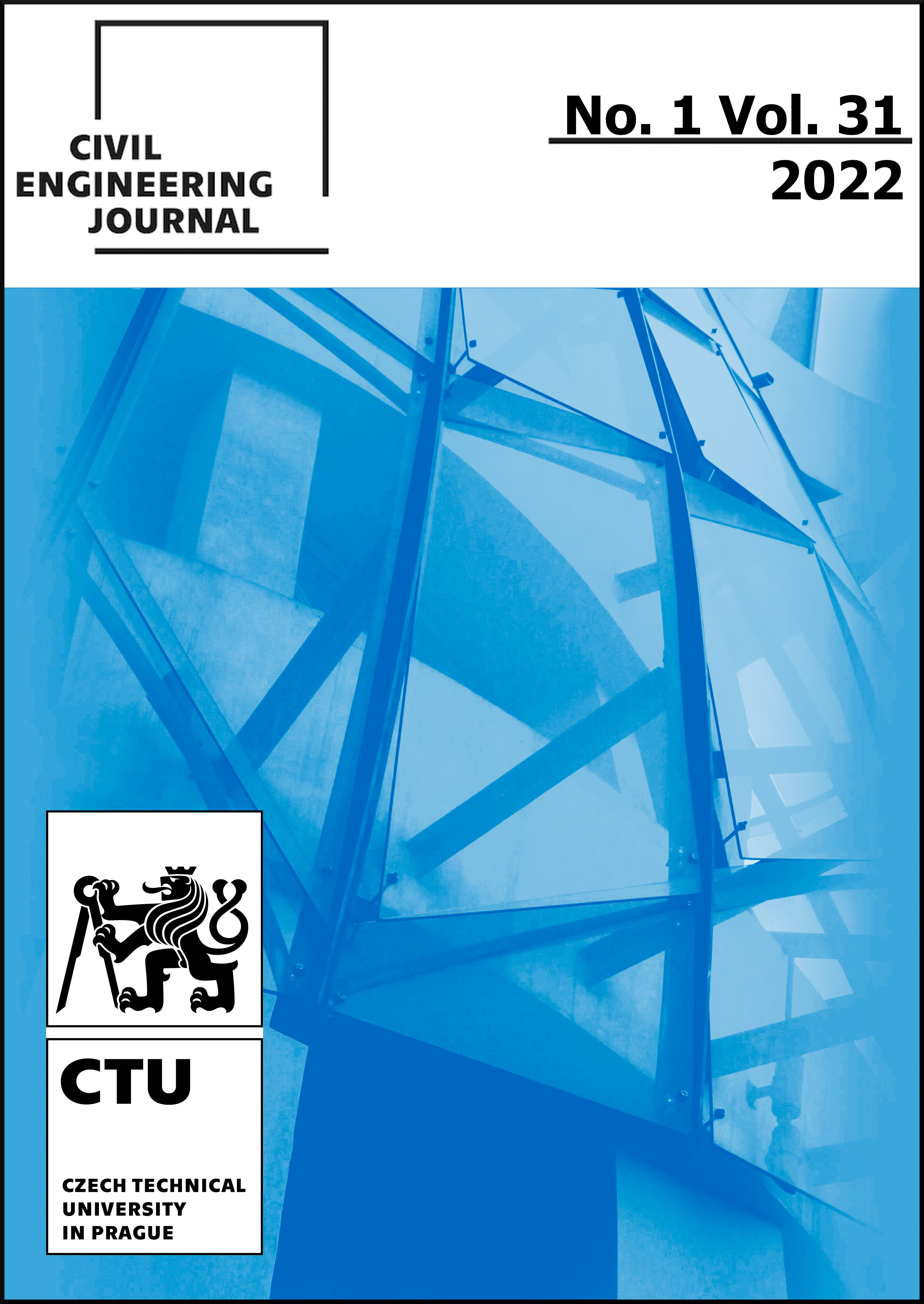A SUSTAINABLE APPROACH TO IMPROVEMENT OF CORROSION PROTECTION COATINGS FOR STEEL STRUCTURES
DOI:
https://doi.org/10.14311/CEJ.2022.01.0001Keywords:
Biobased ion exchanger, Protective coatings , Corrosion resistance, Sustainability, Moisture stability, Adhesion capacity, Abrasion resistanceAbstract
Corrosion is a primary factor compromising the safety and service life of steel structures. Corrosion protection coatings are generally employed for protection of the steel structures that are exposed to different aggressive environments. This research evaluated the use of biobased ion exchangers as a sustainable means of improving corrosion protection coatings.
Two base polymer coatings (vinyl and coal-tar epoxy) were considered. The following types and dosages of biobased ion exchangers were evaluated in these coatings: (i) strong-base ion exchange cellulose in OH, PO4, SiO3, BO3, NO2, SO4 and NO3 forms at 1% by weight of resin; (ii) weak-acid starch citrate ion exchanger in H form at 1 wt.%; and (iii) strong-base ion exchange cellulose in OH form at 2 wt.%. In addition, a strong-base ion exchange resin in OH form was considered at 1 and 2 wt.% as control. Different coating formulations were evaluated based on the outcomes of salt-fog corrosion, moisture resistance, pull-off strength, and abrasion resistance tests. The introduction of certain biobased ion exchangers in protective coatings was found to be an effective means of achieving improved levels of corrosion resistance, adhesion capacity, moisture stability and abrasion resistance.
Downloads
References
Mosa, A.A., El-Ghamry, A., Truby, P., 2011. Chemically Modified Crop Residues as a Low-Cost Technique for the Removal of Heavy Metal Ions from Wastewater. Water, Air and Soil Pollution, vol. 217 (1-4): 637-647.
Dhodapkar, R., Rao, N., Pande, S., Kaul, S., 2006. Removal of basic dyes from aqueous medium using a novel polymer. Bioresource Technology, vol. 97: 877-885.
Roberge, P.R., 2008. Corrosion Engineering (McGraw-Hill, New York).
Neumann, S., Fatula, P., 2009. Principles of Ion Exchange in Wastewater Treatment. Asian Water , March: 14-19.
Luqman, M., 2012. Ion Exchange Technology I: Theory and Materials (pringer Science & Business Media).
Luqman, M., 2012, Ion exchange technology II: Applications (Springer Science & Business Media).
Bolisetty, S., Peydayesh, M., Mezzenga, R., 2019. Sustainable Technologies for Water Purification from Heavy Metals: Review and Analysis. Chemical Society Reviews 2019, 48 (2) 463-487.
Wing, .R. , 1996. Corn Fiber Citrate: Preparation and Ion-Exchange Properties. Industrial Crops and Products, vol. 5 (4): 301-305.
Sud, D., Mahajan, G., Kaur, M.P., 2008. Agricultural Waste Material as Potential Adsorbent for Sequestering Heavy Metal Ions from Aqueous Solutions – A Review. Bioresource Technology, vol. 99 (14): 6017-6027.
Downloads
Published
Issue
Section
License
Copyright (c) 2022 Stavební obzor - Civil Engineering Journal

This work is licensed under a Creative Commons Attribution-NonCommercial 4.0 International License.
Authors who publish with this journal agree to the following terms:
- Authors retain copyright and grant the journal right of first publication with the work simultaneously licensed under a Creative Commons Attribution License that allows others to share the work with an acknowledgement of the work's authorship and initial publication in this journal.
- Authors are able to enter into separate, additional contractual arrangements for the non-exclusive distribution of the journal's published version of the work (e.g., post it to an institutional repository or publish it in a book), with an acknowledgement of its initial publication in this journal.
- Authors are permitted and encouraged to post their work online (e.g., in institutional repositories or on their website) prior to and during the submission process, as it can lead to productive exchanges, as well as earlier and greater citation of published work (See The Effect of Open Access).
How to Cite
Accepted 2022-03-29
Published 2022-04-30










